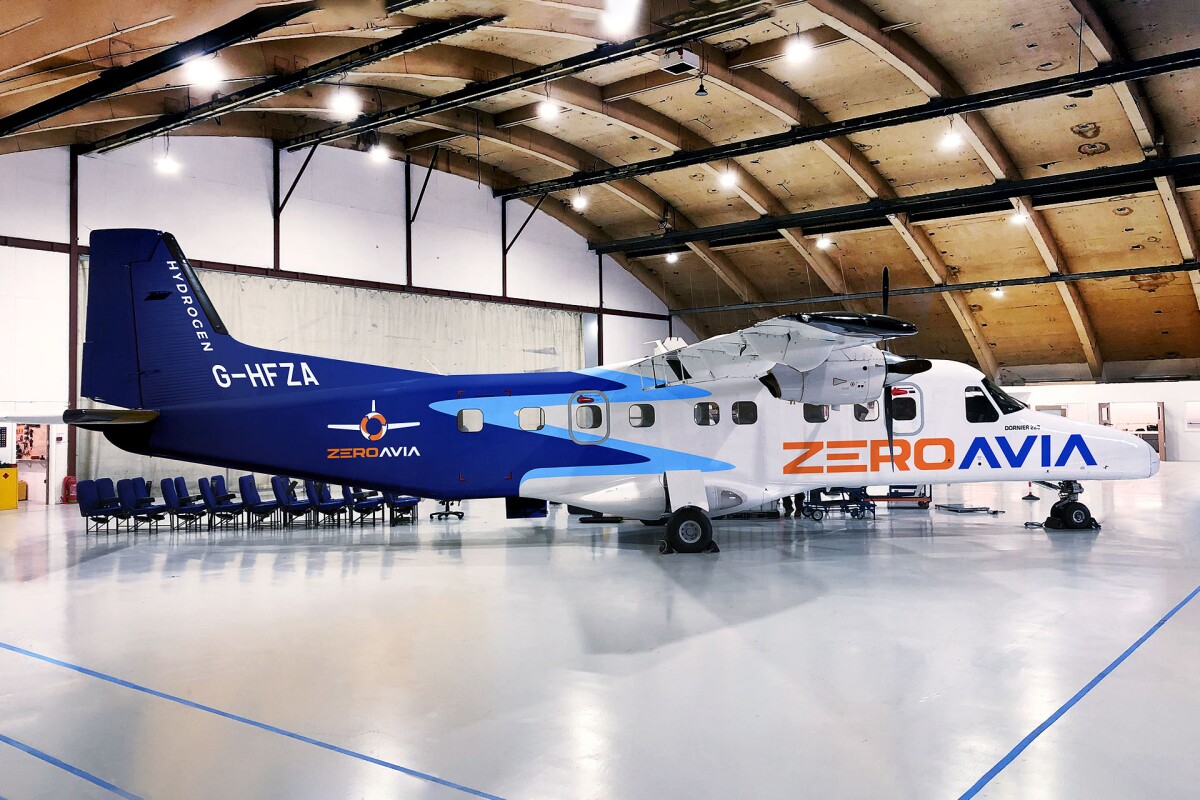Hydrogen aviation pioneer ZeroAvia has announced its biggest zero-emissions H2 aircraft yet: a 76-seat airliner it's building with Alaska Airlines and hoping to fly in 2023 – as well as its commercial H2 flight between London and Rotterdam in 2024.
These groundbreaking commercial flights will cover the 200-mile (320 km) distance between London and Rotterdam The Hague airport carrying 19 people, and at this stage it looks like they'll be the first commercial, international hydrogen flights in the world. This will be a significant moment, as the airline sector needs hydrogen powertrains if it's to begin decarbonizing air travel.
ZeroAvia also announced its collaboration with Alaska Air Group to develop a monster 76-seat hydrogen airliner, significantly larger than the 40-seat Dash-8 that Universal Hydrogen is working on, or the 40-seat Dornier 328 being developed by H2Fly and Deutsche Aircraft.
The new plane, a De Havilland Q400 turboprop, will be retrofitted with ZeroAvia's biggest hydrogen powertrain yet, designated the ZA2000 and capable of scaling between 2-5 MW of power output, depending on configuration. "We'll have first ground tests of that next year, and the first flight, probably in 2023," ZeroAvia's Val Miftakhov tells us over a video call.
The Q400 in standard trim can be specified to carry up to 90 passengers, and a tank of jet fuel can deliver a range up to 2,040 km (1,268 miles). The hydrogen version will carry 76 passengers, and its target range is closer to 800 km (500 miles). But while there are definitely compromises to be made, such an aircraft will still be able to decarbonize many well-traveled routes where green hydrogen refueling facilities can be rolled out.

"500 miles of range with a full passenger payload, that's pretty decent," says Miftakhov. "It covers the vast majority of the legs these aircraft fly. It's less than half their maximum fuel range, but it'll still be a successful commercial aircraft."
In order to get that range figure up closer to the fossil-fueled status quo, ZeroAvia will need to move to higher-density fuel in the form of cryogenic liquid hydrogen, and the company is working concurrently on a liquid hydrogen powertrain it hopes to begin testing next year.
Miftakhov is not daunted by the challenges of using liquid hydrogen. "Well, it's rocket science," he tells us. "But it's rocket science that's been done, right? We're actually working with a couple of partners on that, we'll have some liquid hydrogen tests later this year. We'll see if those will be flight tests, or ground tests of the flight hardware, but it's a matter of timing; if it's not next year, it'll be the year after. 2026 is our target for that as a commercial product."
These hydrogen aircraft are unlikely to run buffer battery systems, says Miftakhov. "For fixed wing aircraft – at least, for turboprops – our approach is not to have any batteries at all," he tells us. "The power ratio for jets, especially regional jets, is higher, and there you start maybe thinking about what we might do on the battery side. But the batteries are not that great, there's not what we'd call a dramatic improvement in power density relative to advanced fuel cell systems.
"Our targets for the fuel cell systems in these aircraft are anywhere between 1.5-2 kW/kg in terms of power density. You need to use pretty fancy batteries to beat that. They tend to be either heavy or volatile, and you don't get a lot of cycles out of them. And from the cell level to the system level, you have something like a 40 percent mass overhead from things like the BMS, the fire suppression, the cooling, and the separator walls you need to isolate the cells so they can't take out the whole battery if they catch fire. Our ideal situation is if we just don't have any batteries at all."
It's early days yet, but as stated before, green hydrogen's pretty much the only technology promising to deliver a useful range for zero-emissions commercial airliners. So it's great to see things starting to accelerate, and we look forward to seeing these machines in action.
Source: ZeroAvia






